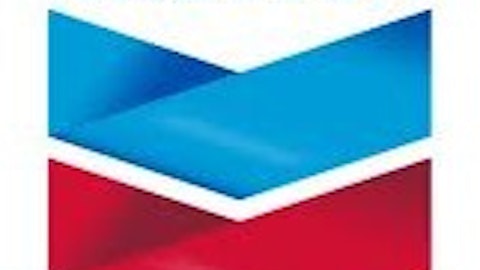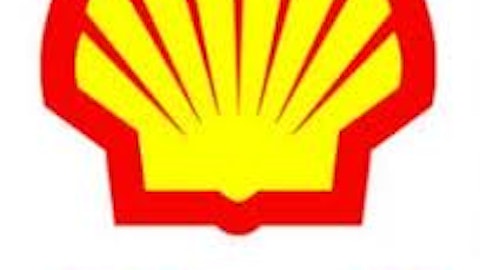
Let’s look at the slide in Brazil’s oil industry and what it’s doing to get back to its former glory days.
The beginning of a decline
In 2010, Brazil’s oil industry hit its peak. The country was producing 2.7 million barrels per day and was a net exporter of oil. On top of that, much of the world was talking about its sugar cane ethanol business as a potential global model for alternative-fuel production. Ever since then, though, energy production from both oil and ethanol has been on a steady decline. Today, total oil production has slumped considerably. Brazil’s National Petroleum Agency estimates that February production was 2 million barrels per day, an 8% slide year over year and a 26% drop from the 2010 peak. Thanks to the decline in production and a large jump in domestic consumption, the country is now a net importer of petroleum and is even receiving ethanol imports from the United States.
What’s even more concerning, though, is the financial condition of its primary oil company, Petrobras Argentina SA ADR (NYSE:PZE). For the company to meet its expected production goals, the company will need to raise $4.3 billion per year from the capital markets for the next five years. It’s also selling off some of its non-Brazilian assets to raise capital and focus its efforts domestically. One of the largest reasons for the company’s lethargic growth as of late has been strict labor policies from the government and a mandate that parts and equipment for the oil industry be 55% sourced from Brazilian manufacturers.
The two lights at the end of the tunnel
Normally, a decline in production could indicate that a country is running out of oil. Quite the contrary in this case. It’s estimated that Brazil has 6.4% of the world’s shale gas deposits, and its ultra-deepwater oil reserves in what’s known as the pre-salt formation are massive. Proven reserves for the formation is at about 8.3 billion barrels of oil equivalent, but some estimate the field to contain as much as 50 billion barrels of oil. The problem with these resources, though, is that they’re both difficult and expensive to access. While the U.S. has adapted to the unconventional shale drilling game, Brazil has yet to produce any significant quantities of oil or gas in these plays because the tech to access it — hydraulic fracturing and horizontal drilling — has not been as quickly adapted. Also, the pre-salt formation has been determined ultra-deepwater for a reason. The most lucrative parts of the field are more than 170 miles offshore and more than 4.4 miles below the ocean surface.
Despite the heavy costs, this new field has been the major focus of Petrobras, and much of that raised capital will go into developing this resource. Since its discovery in 2006/2007, the field is now up to approximately 300,000 barrels per day. Petrobras is currently operating eight platforms and has plans to bring another 11 online in the next couple of years.
Bring in the reinforcements
The numbers from these offshore finds to date may be promising, but it’s not enough for the country to keep up with its demand. So the country has taken a couple of steps to make the country more industry-friendly. The National Petroleum Agency will auction off exploration licenses in May for the first time in five years; the country was rather lenient with Chevron Corporation (NYSE:CVX) and Transocean LTD (NYSE:RIG) after its spill last year despite threats of $20 billion in fines and expulsion from the country, and the country’s regulatory board is considering an easing of the local-content mandate.
With Petrobras struggling to increase production and keep afloat financially, bringing in outside help could be just what Brazil’s oil industry needs. The licenses may be production-sharing agreements, but it’s the first time the country will sell rights in the pre-salt formation as well as in its shale gas plays. It appears that there is plenty of demand, too. So far, more than 70 companies have stated their intent to bid in the upcoming auction. Not only can several majors such as Chevron Corporation (NYSE:CVX) and BP plc (ADR) (NYSE:BP) bring in lots of capital for investment (the two companies have $20.5 and $19.5 billion in cash on their books, respectively), but they also have experience in accessing deep formations like the pre-salt. Last month, Chevron announced a big find in the Gulf of Mexico, and BP’s most recent discovery in Trinidad and Tobago nearly doubled its initial estimates of reserves in the field.
The easing of local content rules could be a promising sign for oil-services companies and exploration and production companies. Not only will this make Brazil’s oil industry more competitive, but it will also allow for other companies to get in the action. Seadrill Ltd (NYSE:SDRL) has three drillships under construction that will all have the capability to drill in 10,000 feet of water and reach depths of 40,000 feet. The addition of these three ships will double the company’s presence in Brazil. With eased local content regulations, expect other offshore drillers to increase their activity in the region as well.
What a Fool believes
Brazil still has a long road ahead of it before it becomes the major oil exporter it hopes to be. Certainly the prospects in the pre-salt formation could be a key to unlocking that potential, but majors such as BP and Chevron Corporation (NYSE:CVX) will have to be relied upon to get the required capital for the projects. These recent moves to be more industry-friendly will help, but mandates such as the local-content rule will continue to hamper production and growth. If Brazil wants to realize its full potential, then it needs to re-evaluate the implications of these regulations.
The article Who Can Help Brazil’s Oil Industry Stop the Bleeding? originally appeared on Fool.com.
Fool contributor Tyler Crowe has no position in any stocks mentioned. You can follow him at Fool.com under the handle TMFDirtyBird, on Google +, or on Twitter, @TylerCroweFool. The Motley Fool recommends Chevron, Petrobras, and Seadrill and owns shares of Seadrill and Transocean.
Copyright © 1995 – 2013 The Motley Fool, LLC. All rights reserved. The Motley Fool has a disclosure policy.





